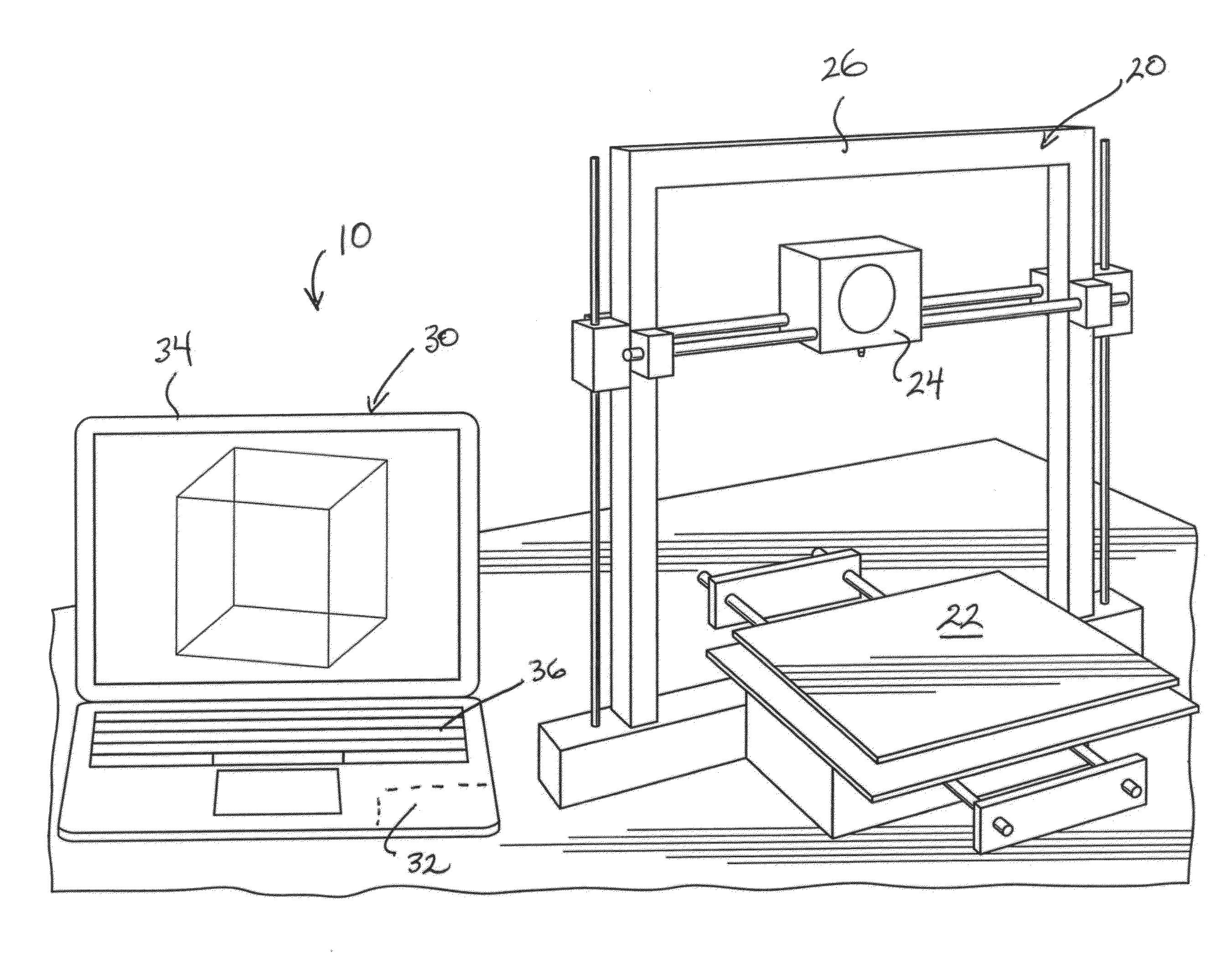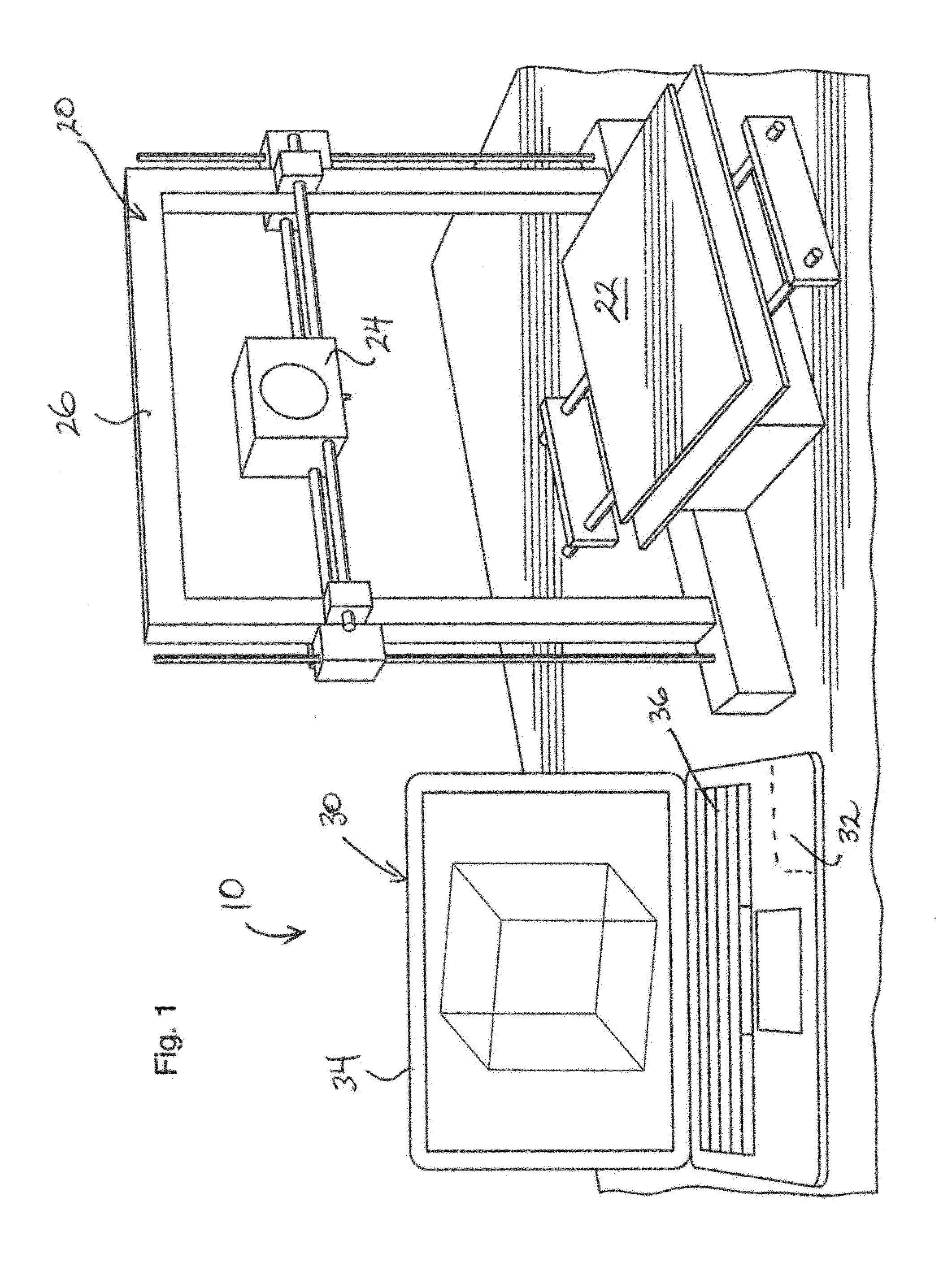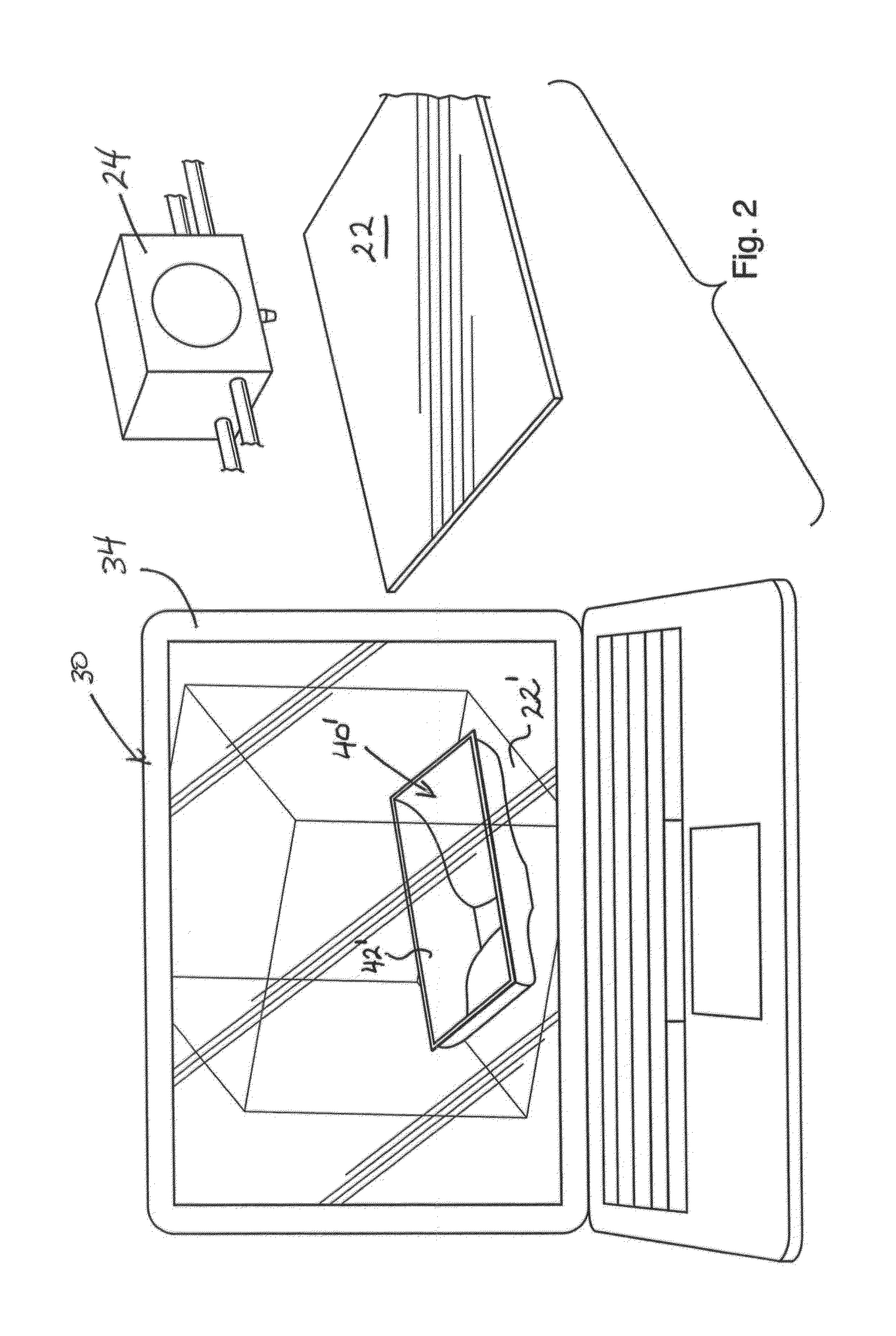Method of Reducing and Optimising Printed Support Structures in 3D Printing Processes
a printing process and printing technology, applied in the direction of additive manufacturing processes, manufacturing tools, manufacturing data acquisition/processing, etc., can solve the problems of reducing adding both considerable cost and time to the 3d printing of certain target model configurations, and requiring the formation of supporting materials, so as to reduce the volume of required model materials and increase the printing efficiency of 3d printers. , the effect of less tim
- Summary
- Abstract
- Description
- Claims
- Application Information
AI Technical Summary
Benefits of technology
Problems solved by technology
Method used
Image
Examples
Embodiment Construction
[0041]Reference may now be bad to FIG. 1 which illustrates a 3D printer assembly 10 in accordance with a preferred embodiment of the invention. The printer assembly 10 includes a 3D printer 20, having a printer table 22 and printer head 24 which is movable in three axis relative to the printer table 22 on a gantry frame 26. The 3D printer 20 is controlled a computer 30 which includes a proccessor 32 having memory, as well as a video display 34 and keyboard 36.
[0042]As will be described, the printer assembly 10 is operable for use in the automated design building of a selected target model 40 (shown in FIG. 11). In the detailed description, and by way of non-limiting example, the target model 40 is described and illustrated as raised platform 42. As will described, the raised platform 42 is structurally supported during formation by the printing process by way of one or more integrally formed 3D printed pillars or support structures 50.
[0043]Although not essential, most preferably th...
PUM
| Property | Measurement | Unit |
|---|---|---|
| threshold angle | aaaaa | aaaaa |
| threshold angle | aaaaa | aaaaa |
| threshold angle | aaaaa | aaaaa |
Abstract
Description
Claims
Application Information
 Login to View More
Login to View More - R&D
- Intellectual Property
- Life Sciences
- Materials
- Tech Scout
- Unparalleled Data Quality
- Higher Quality Content
- 60% Fewer Hallucinations
Browse by: Latest US Patents, China's latest patents, Technical Efficacy Thesaurus, Application Domain, Technology Topic, Popular Technical Reports.
© 2025 PatSnap. All rights reserved.Legal|Privacy policy|Modern Slavery Act Transparency Statement|Sitemap|About US| Contact US: help@patsnap.com



